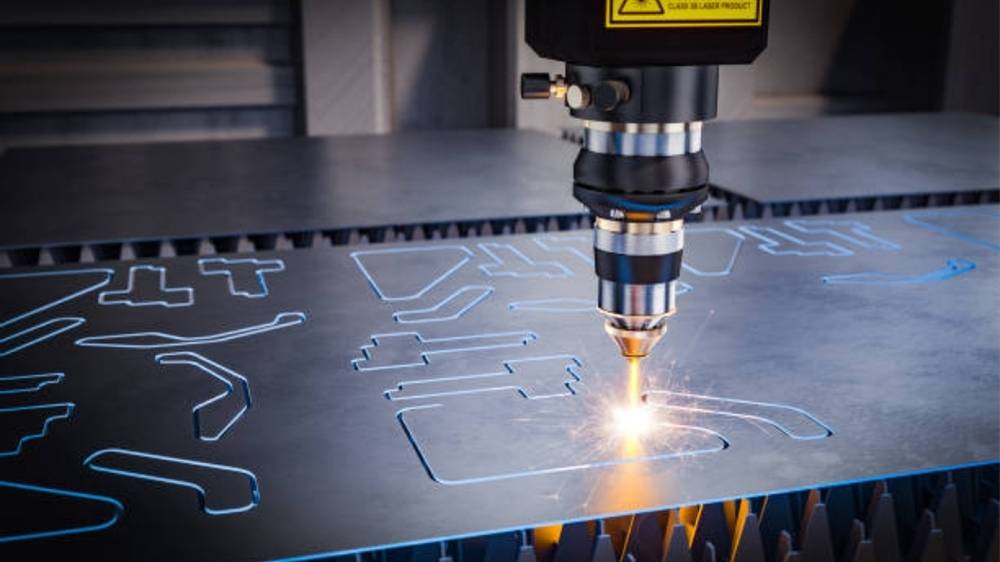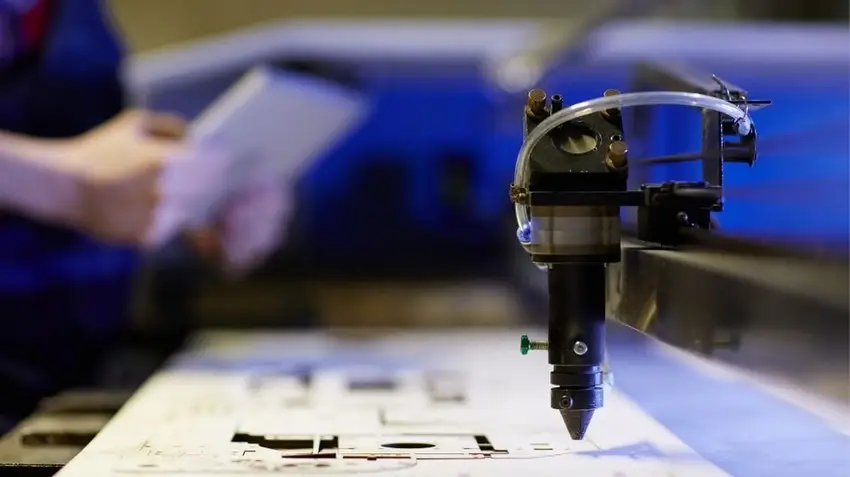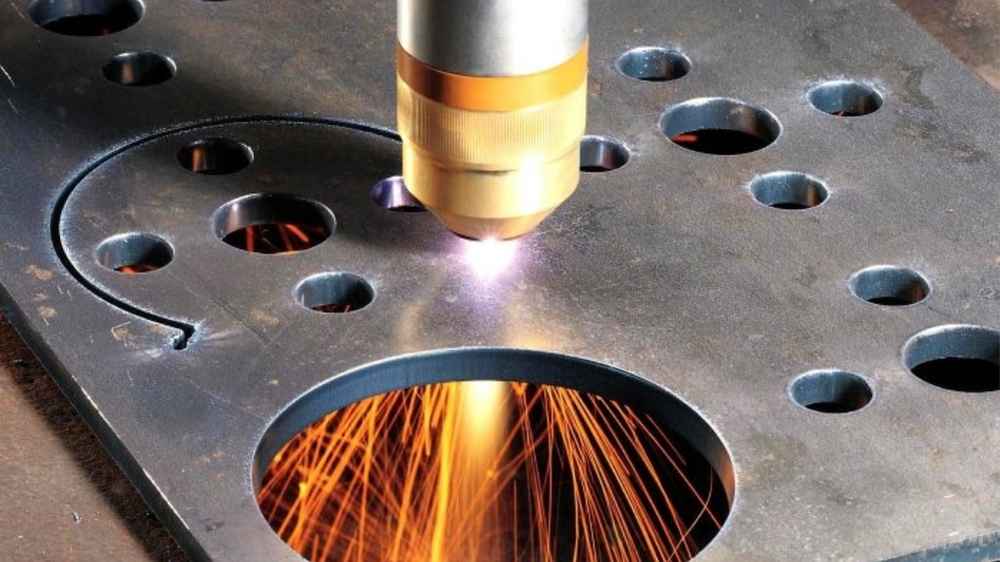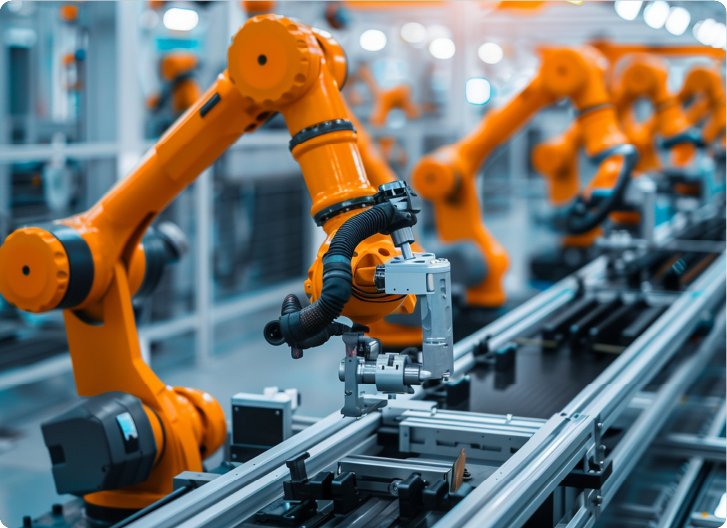
Laser cutting and plasma cutting have become indispensable techniques for metal slicing. These offer unique benefits and fit different project demands. For example, laser cutting is ideal for smooth, clean edges and detailed jobs. Inversely, plasma cutting can precisely carve thicker materials. It is the go-to choice for heavy-duty tasks.
In this guide, we’ll walk you through these dominant techniques and what makes each one unique. By the end of reading, you’ll have a clear distinction in knowledge of which process suits your material type, budget, and production needs.

Laser Cutting
You can rely on laser cutting when high-quality demand arises. In the process, it involves a laser beam for sublimation. Laser cutting technology produces clean edges alongside accurate dimensional accuracy. It successfully preserves a material's structural integrity. Laser cutting facilitates the processing of every metal variety. For instance, it can pierce through wood-based materials, plastics, and fabrics without difficulty. It allows the processing of complex work structures. Due to these features, it finds its extensive applications in aerospace, automotive sectors, and electronics manufacturing. Moreover, laser cutting is a speedy process. It enables meeting short deadlines and allows you to achieve cuts that precisely meet design requirements. Even the end product requires minimal product adjustments for final production.
The production system achieves superior accuracy results and reduces the total waste output. Whether you need to create 1 piece or want to fabricate parts in bulk, laser cutting is a vital option. It facilitates businesses of all sizes to reduce their operational costs by using energy efficiently throughout complex design production processes.
The laser cutting process follows these standard operational steps:
The process starts by drawing. It is the digital design footprint. The design instructions show the machine where to aim the laser beam. Mainly, most of the users generate their design with CAD software.
The material receives placement in a flat position on the machine's bed. It requires complete stability due to laser movement throughout the cutting.
You need to adjust your machine settings directly before starting as per the material you work with. For instance, power settings, speed adjustments, and depth limits are required to execute the process. Moreover, it requires unique parameter settings as per processing either metal, plastic, or wood.
For the laser to make clean cuts, it must strike the exact target area. The laser head's distance must be kept from the material surface to allow adequate beam focus. A properly focused laser beam produces both precise, clean cuts and accurate cutting processes.
After all the setup is complete, the cutting process starts. Through its programmed path, the laser system heats materials until they reach melting or burning points to complete the cut. The beam operates with exact movements and a distinct line.
Sometimes the laser process requires simultaneous gas delivery of oxygen or nitrogen. The blowing gas produced by this stream removes melted material while maintaining the cut's cleanliness. Support gas enables both thermal cooling that stops unwanted burning and suppresses rough edges.
Monitoring is quite imperative during the whole process. The job requires occasional pauses for small modification procedures. The consistent results together with reduced material loss occur through this process.
The part lifting process from the bed allows you to inspect the accuracy after the cut has finished. After cutting, you should inspect the edges because you can either clean them or perform a light finishing procedure to eliminate marks or debris.
Many industries prefer laser cutting because of its accurate abilities combined with efficient operations and affordability. Here are the common benefits of laser cutting.
Laser cutting provides uniform cuts. It allows the execution of narrow, dimensioned, and tiny cuts. You can obtain exact cutting of sophisticated shapes and detailed design elements without producing many operational errors. The aerospace and medical sectors heavily employ it for creating objects for proper functionality.
Laser cutting machines produce small amounts of burrs. It gives outstanding outcomes for unfinished parts, which require no extra alterations. Besides, it utilizes minimum thermal energy, which prevents material deformation. This method speeds up the work and costs less for bulk orders. In addition, laser cutters generate minimal waste of material because a precise laser beam tracks the necessary path through raw materials.
Laser cutting is highly versatile. It can effectively cut down the high-strength metals. For example, it is compatible with steel, aluminum and plastic, acrylic, wood, as well as fabrics. It allows operations with thin sheets and thicker sections equally proficiently. This makes it an ideal technique for the automotive and furniture sectors. Moreover, laser cutting provides businesses with a single processing station to develop various cuts from different materials.
A laser cutting machine needs a single setup. It can execute various kinds of cuts unlike conventional cutting tools that demand tool changes between operations. It shortened the tool changeover and setup process. Thanks to its versatility a single machine lets operators complete various jobs which results in higher productivity making laser cutting suitable for prototype work and short-run manufacturing.
Laser cutting is a highly rapid technique. The focused light beam pattern works perfectly on complicated design patterns. It shortens the production cycles when using laser cutting instead of conventional processes. In general, fast production requirements call for laser cutting because it delivers a swift and efficient way to make parts. You will experience shorter lead times for your production, whether you need prototypes or bulk manufacturing.
Laser cutting produces neat and clean edges and small amounts of distortion, which substantially minimizes the need for additional finishing work. A majority of laser-cut pieces directly qualify for assembly use without needing supplementary operations such as sanding or deburring. A streamlined workflow reduces labor costs by saving time and money.
Within long-term financial eval, laser cutting gives economical benefits despite its advanced technology nature. Its cutting efficiency surpasses other processing techniques because it consumes less energy. Due to less power utilization and a decrease in required consumables, such as cutting fluids and tools, are typical benefits of laser technology.
Despite its unique benefits, laser cutting also poses a few challenges.
Thin to medium-density materials are well suited in laser cutting applications. It may pose limitations when cutting through heavy materials because it demands additional processing time and power usage. Its accuracy suffers when metals exceed a ½ inch in thickness. In contrast, plasma cutting would probably be more efficient for heavy materials.
Laser cutting can effectively operate on thin sheets. The efficiency of the process declines at an increasing rate with thicker material dimensions. For mass-scale production runs, use plasma cutting as an alternative to laser cutting because of its superior efficiency. It offers fast completion times for projects that need quick execution when processing heavy materials.
Laser cutting machines require a high initial financial investment. Usually, startup businesses and small enterprises face challenges due to substantial costs, which are difficult to recover. However, long-term machine operations generate efficiency levels that offset their initial purchase price.
The laser cutting process demonstrates difficulty while processing reflective materials such as copper or brass. Glass and other see-through materials prove difficult to cut through laser cutting machines.
When using laser cutting, the material near the cut area tends to develop heat-affected zones (HAZ). It may lead to material deformation and impair the edges of the material. The high temperatures during the process tend to warp metals, particularly. After laser processing, you might need supplementary finishing work to avoid any detected defects.
The laser cutting operation requires experienced personnel who must program the machine and watch over its performance. A beginner operating the machine tends to produce mistakes or discard valuable materials. The quality of accurate cuts depends on adequate training that leads to professional results. So, its complete potential depends on having well-trained operators who supervise the process.
A laser cutting machine requires operators to handle high-powered lasers. It possesses dangerous potential. The user needs proper safety equipment to avoid eye injuries and burns. During the cutting operation, hazardous fume emissions tend to form. Safety during operation depends on both adequate ventilation systems and protective equipment.

Plasma Cutting
Plasma cutting is another effective method as it delivers rapid operation and intense power features. It employs an ionized gas jet to slice materials since it differs from laser cutting technology. It provides superior performance when dealing with thick materials because it can easily cut metals that measure up to several inches in thickness. This quick operation capability makes it suitable for demanding industrial applications.
On the application side, plasma cutting is precisely used in the shipbuilding and automotive industries. It produces efficient, cost-effective, rapid rough cuts on thicker materials. The increased heat production from plasma cutting operations compared to laser cutting will damage the edges of materials.
When it comes to plasma cutting precision, it falls behind laser cutting. However, its efficiency remains significantly high. The technique serves jobs that demand coarse cuts rather than precise details. Likewise, laser cutting also demonstrates flexibility because it operates on a range of materials, including steel, aluminum, and copper. Plasma cutting delivers valuable performance by delivering quick, heavy-duty cuts. Appropriate tools combined with the right techniques allow plasma cutting to produce rapid, dependable outcomes.
Let’s discuss the benefits of plasma cutting over laser cutting.
Plasma cutting provides unique pros when working with large thickness material because laser cutting becomes inefficient when dealing with materials exceeding 1/2 inch in thickness. The speed and precision of laser cutting deteriorate past materials measuring 1/2 inch, yet plasma cutting machines can effortlessly cut through materials extending from 6 inches in thickness. Therefore, it’s the preferred industrial technique when working with heavy materials across construction sites, shipbuilding, and building large machinery and equipment.
The lower initial equipment costs present plasma cutting as a more favorable choice than laser cutting. These machines have lower initial prices. This allows their acquisition by budget-constrained small businesses and limited-budget enterprises. The expenses associated with plasma cutting machine operations and maintenance stay low in the long run. That is why it is an economical solution for extensive cutting requirements across different industries.
Plasma cutting can precisely shape steel, stainless steel, aluminum, brass, and copper, etc. Even, it precisely handles ferrous and non-ferrous materials. In comparison, laser cutting works best with thin materials because it faces challenges cutting reflective metals such as brass and copper.
Plasma cutting can produce rough edges that often require additional finishing. The cuts may have a beveled edge. So, it may not always be effective for precision demanding applications.
Plasma machining is less costly than laser cutting. When dealing with intricate designs and highly detailed work, plasma cutting might not be a good choice for the accuracy you need.
In addition, it can cause more heat distortion on thinner materials. So, it can lead to warping and changing the material’s characteristics near the cut area.
Plasma cutting can’t cut non-metal materials. It’s designed for metals, so trying to cut plastics, wood, or other materials won’t give you clean results.
Furthermore, it produces more fumes and debris than other laser cutting methods. It requires proper ventilation and additional cleanup to keep a safe working environment.
Plasma cutting operates best for thick and tough metals because conventional cutting methods cannot handle them effectively. It operates optimally on thick metal steel and stainless steel parts.
It serves as a suitable solution when you require quick basic cuts. The technique suits projects that require swift completion instead of exactness. It is best for cutting scrap metals along with processing materials ahead of precise operations.
Plasma cutting serves the most useful purpose in operations involving irregular or large metal shapes. It operates best on large metal sheets and plates when detailed designing is not essential. This makes it ideal for basic structural work.
Plasma cutting delivers optimal results for the purpose of cutting conductive metals in demanding outdoor conditions. It proves suitable for construction ships and the automobile industry needing durability in challenging operating conditions.
The selection of plasma cutting for your project becomes essential when you require high-volume production along with budget-friendly operations. It provides a cost-effective solution to cut numerous parts, despite being more affordable than laser precision cutting.
Let’s compare laser cutting vs. plasma cutting with some aspects;
| Factor | Laser Cutting | Plasma Cutting |
| Suitable for Thick Materials | No | Yes |
| Ideal for Precision Cutting | High | Medium |
| Works on Dirty/Contaminated Metals | No | Yes |
| Suitable for Thin Materials | High | Medium |
| Cutting Speed | Medium | High |
| Equipment Cost | High | Low |
| Clean Edges | High | No |
| Versatility in Materials | Medium | High |
| Requires Clean Surfaces | Yes | No |
| Low Heat Distortion | High | Medium |
| Ideal for Outdoor Use | No | Yes |
| Suitable for Complex Designs | High | No |
Laser Cutting vs Plasma Cutting may seem similar at first glance, but these are relatively different operations. Using laser cutting helps you cut accurate pieces with smooth edges. It is most useful for processing thin materials. It delivers exact cuts with minimal thermal twist. So, it allows the detailed production work. Plasma works, on the other hand, is a rapid process of slicing metals. It can operate on thicker materials. You can efficiently cut metals exceeding 1/2 inch in thickness using this tool while it simultaneously handles unclean and rusted surfaces.
Apex Rapid serves clients with extensive laser and plasma cutting services, which cover all aspects of their projects. We possess both the tools and expertise to provide precise, detailed cuts and productive, fast cutting services for thicker materials. We deliver quick, accurate project completion with the best available value to our customers.
